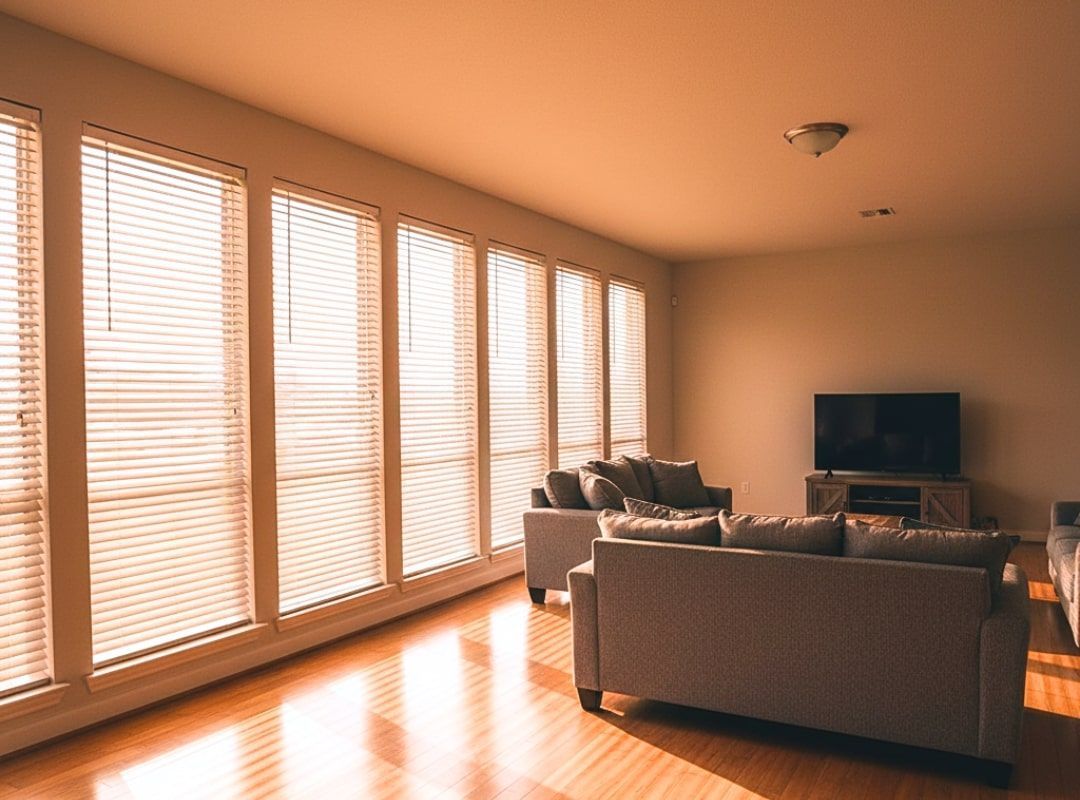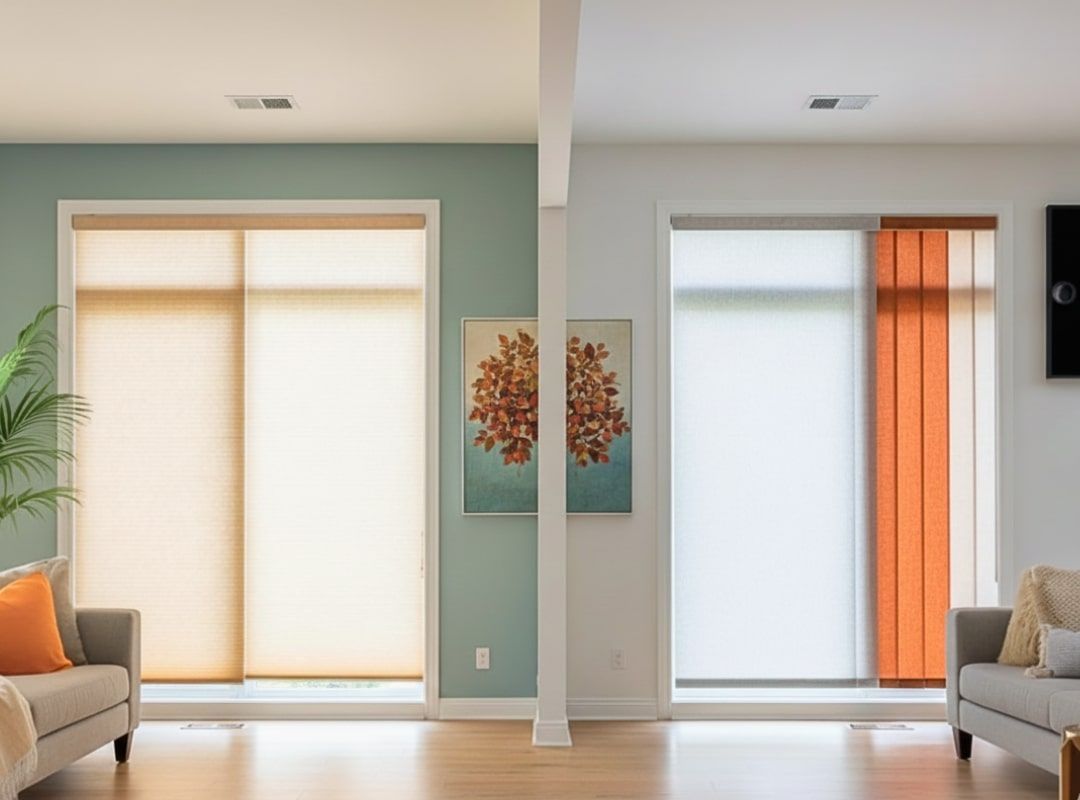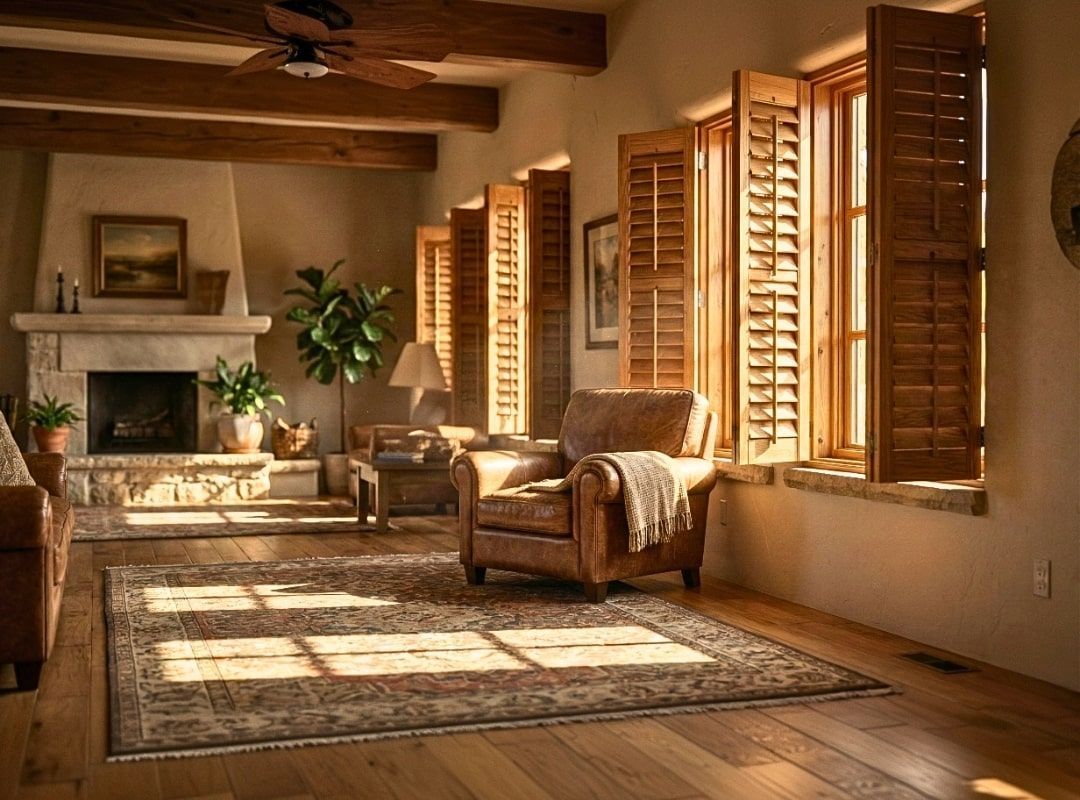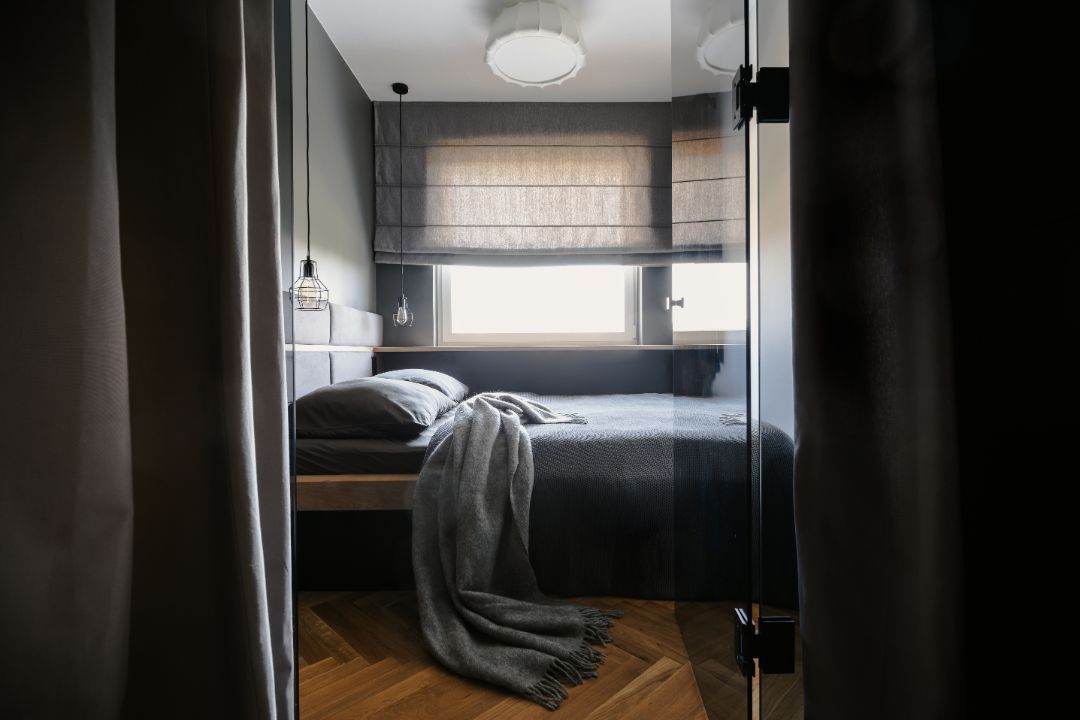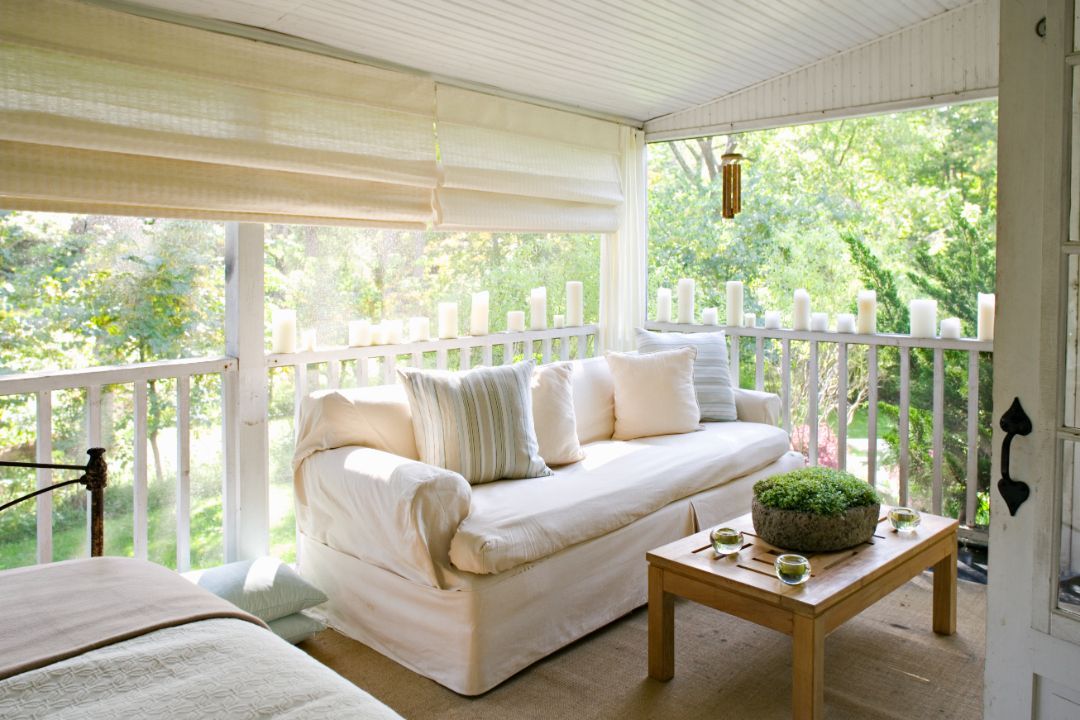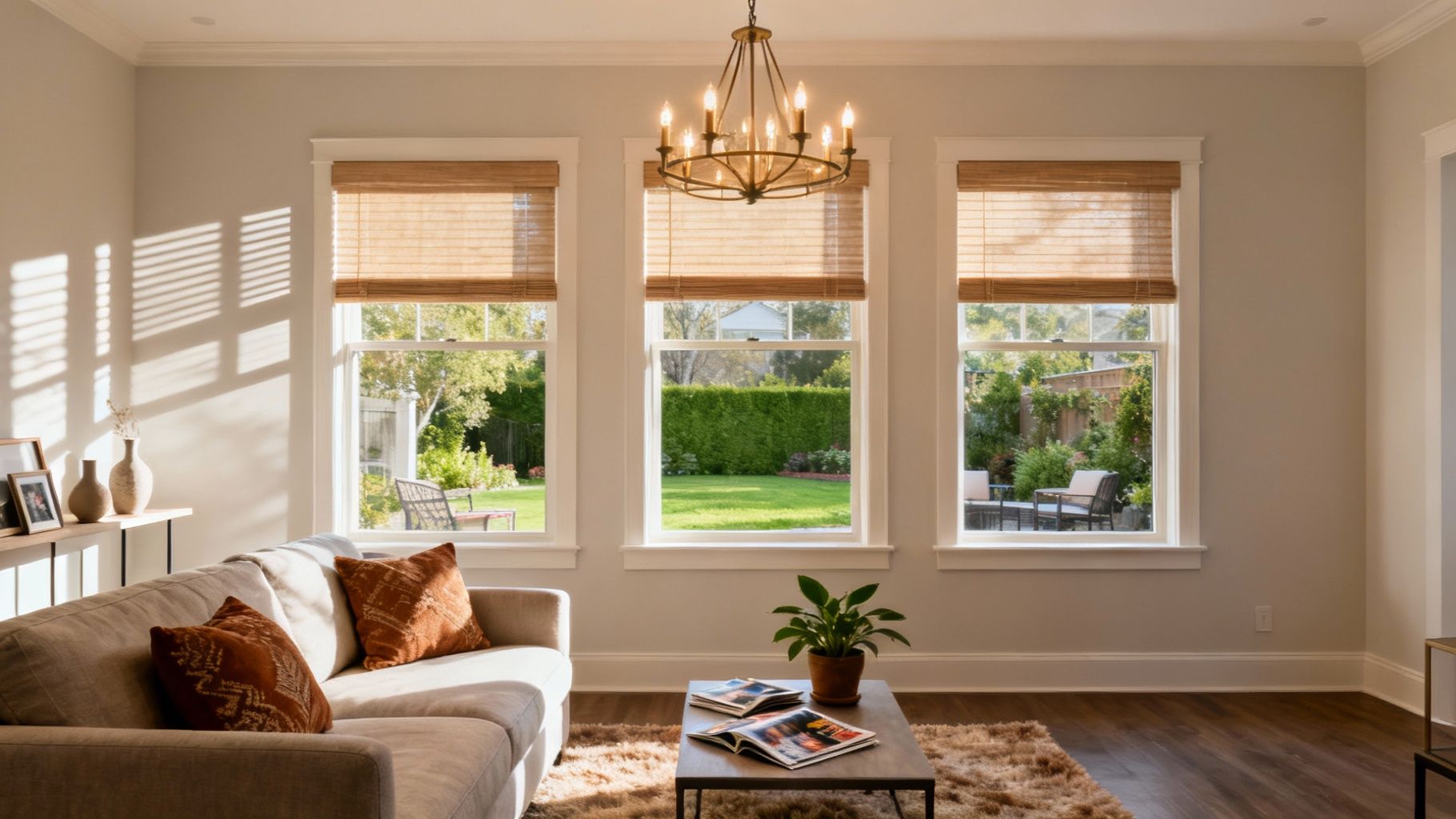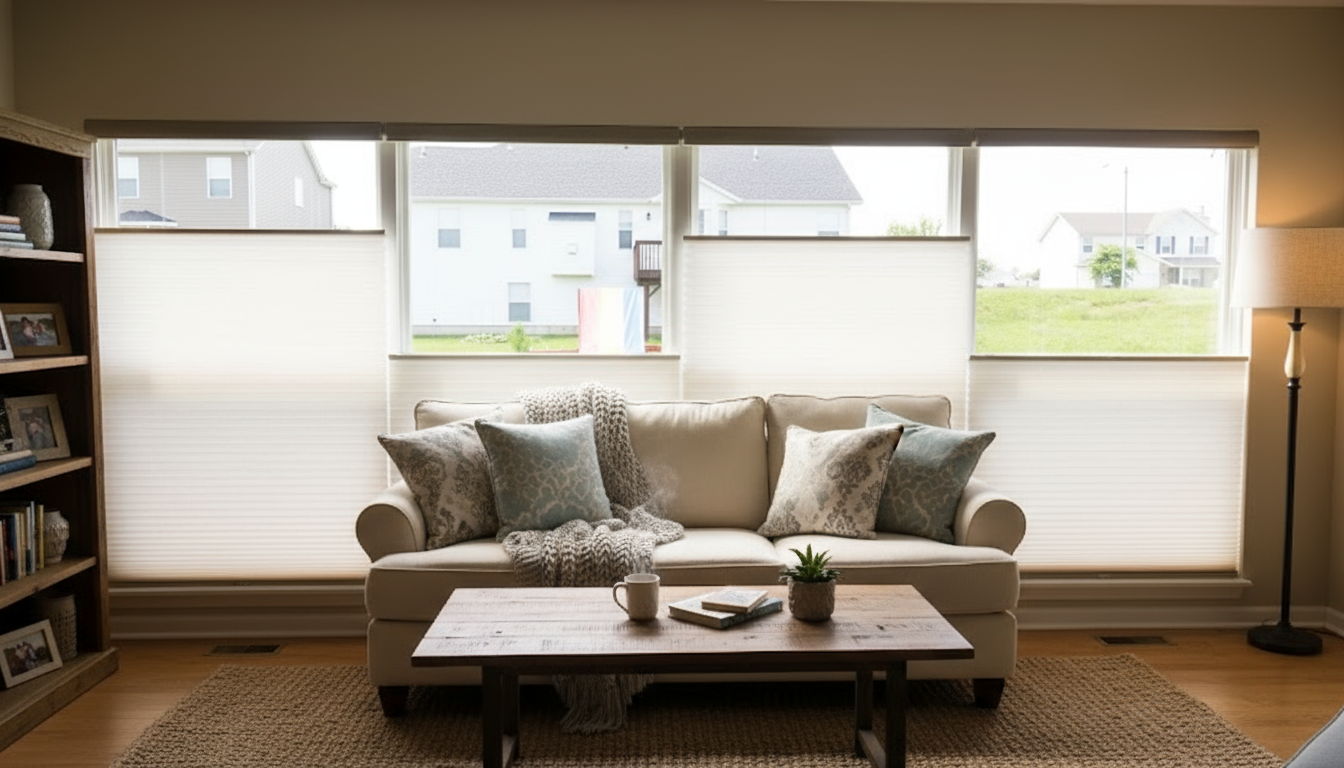The Best Window Treatments for Homes with Open Floor Plans
TLDR;
The best
window treatments for homes with open floor plans are those that provide light control, privacy, and visual cohesion while complementing the overall design. Top choices include sheer shades, cellular shades, layered curtains, vertical panels, and motorized options to enhance both style and function. Coordinating treatments across zones creates flow while allowing flexibility in light and privacy management.
Why Window Treatments Are Essential in Open-Concept Designs

Open floor plans bring in abundant natural light, but without the right window treatments, glare and lack of privacy become problems. Treatments also help with temperature control, especially in climates with hot summers or cold winters. In Texas, where Love Is Blinds TX serves many open-concept homes, the right coverings also protect interiors from UV damage.
Key functions to focus on:
- Light and glare management
- Privacy between zones
- Temperature regulation
- Style cohesion across visible areas
Light Control and Glare Management in Open Layouts
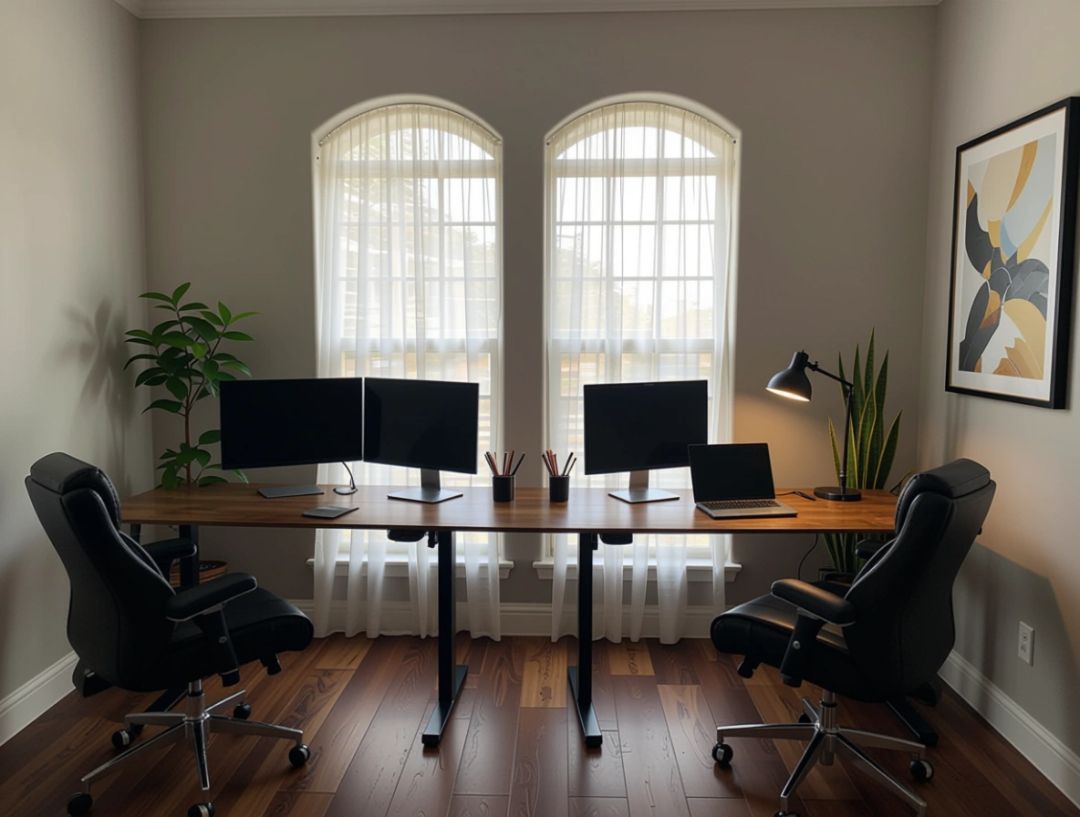
Large windows in open spaces often face multiple directions, bringing in light at different times of day. Without proper treatments, this creates hot spots and glare.
Effective solutions:
- Silhouette sheer shades filter sunlight while maintaining brightness
- Luminette vertical sheers handle tall windows and sliding doors
- Cellular shades offer adjustable light filtering with added insulation
- Layered curtains let you switch between sheer daylight and full blackout
Privacy in Open Floor Plans

Open layouts blur boundaries between rooms. Treatments help define zones without adding walls.
Options for privacy:
- Sheer and blackout layers in shared spaces
- Roman shades in reading corners or home offices
- Vertical panels for sliding door areas
- Motorized blinds for quick privacy when needed
Energy-Efficient Window Treatments
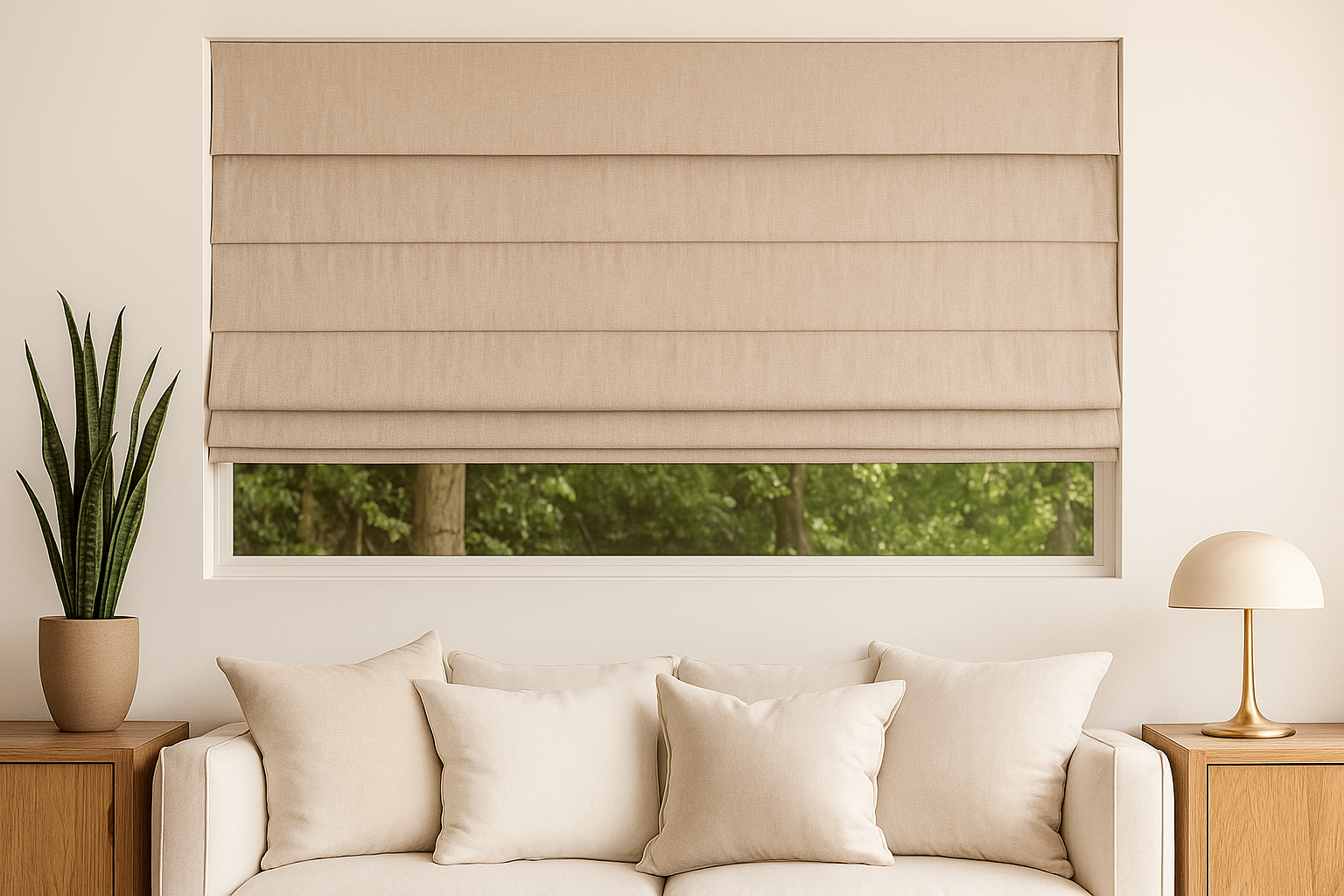
In Texas, heat control is critical. Energy-efficient coverings keep interiors comfortable and reduce HVAC strain.
Best picks:
- Duette cellular shades trap air in honeycomb pockets for insulation
- Vertical cellular shades for large glass walls
- Reflective liners for roller or Roman shades
- Layered drapes with thermal backing for seasonal adjustments
Coordinated Window Treatments for Flow and Style

Visual cohesion is important in open spaces where multiple windows are visible from different angles.
Approaches:
- Match fabrics and colors across treatments for unity
- Use similar textures, such as linen or bamboo, for subtle connection
- Repeat hardware finishes for a coordinated look
- Keep consistent light-filtering levels in connected zones
Top Window Treatment Options – Pros, Cons, and Ideal Uses
Silhouette Sheer Shades
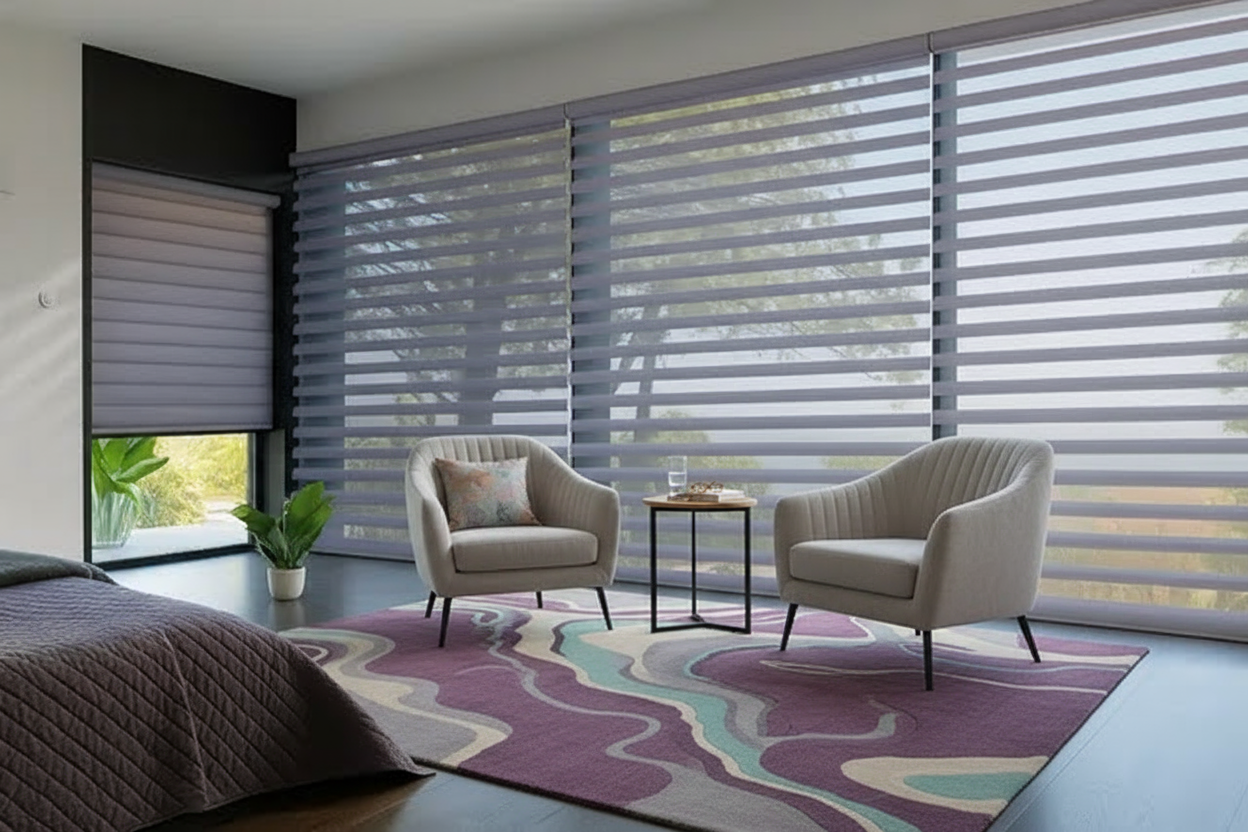
- Pros: Soft light diffusion, privacy during the day
- Cons: Limited blackout
- Best for: Living and dining areas
Luminette Vertical Sheers
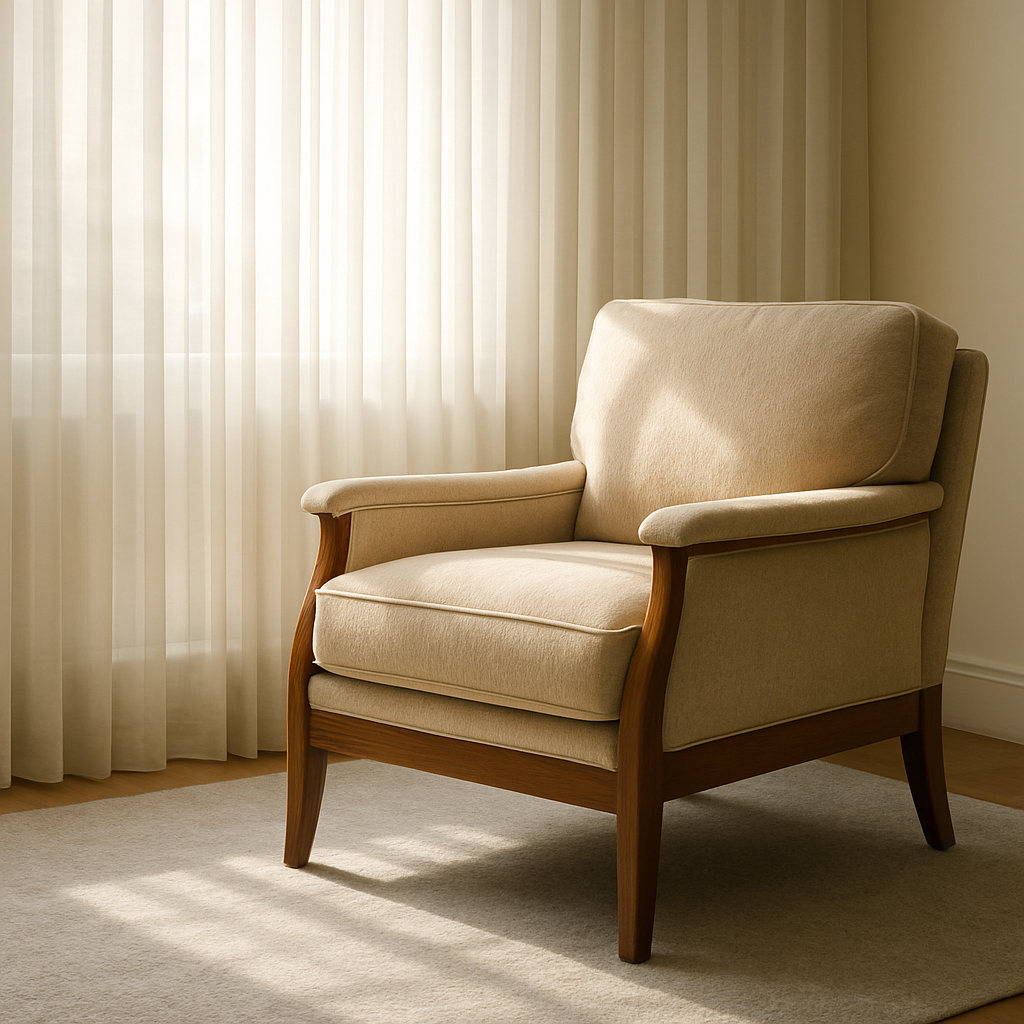
- Pros: Works with tall windows, elegant look
- Cons: Higher cost, delicate handling needed
- Best for: Floor-to-ceiling glass walls or sliding doors
Duette Cellular Shades
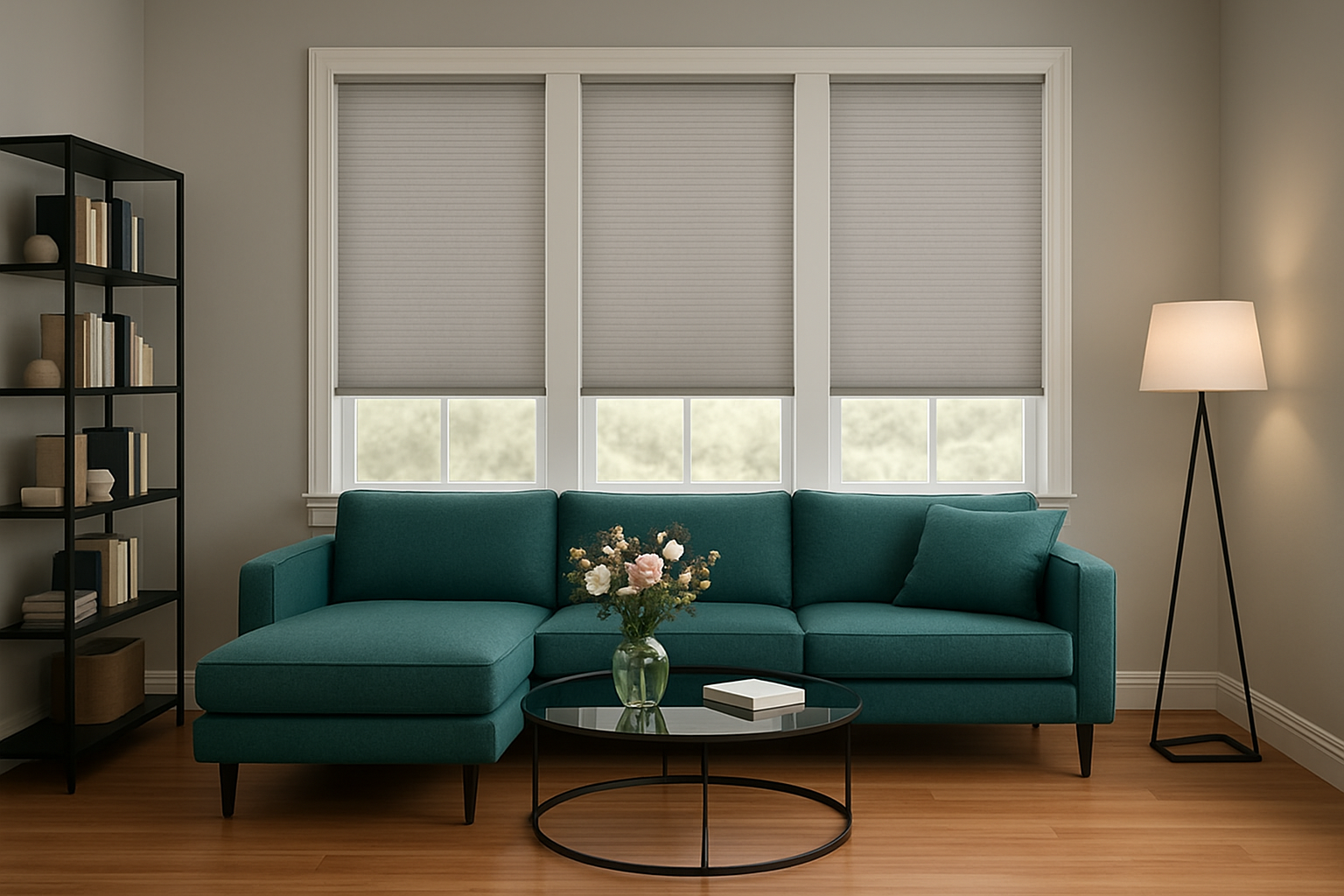
- Pros: Excellent insulation, variety of styles
- Cons: Visible lift lines on some designs
- Best for: Texas heat zones and energy-conscious homes
Roman Shades
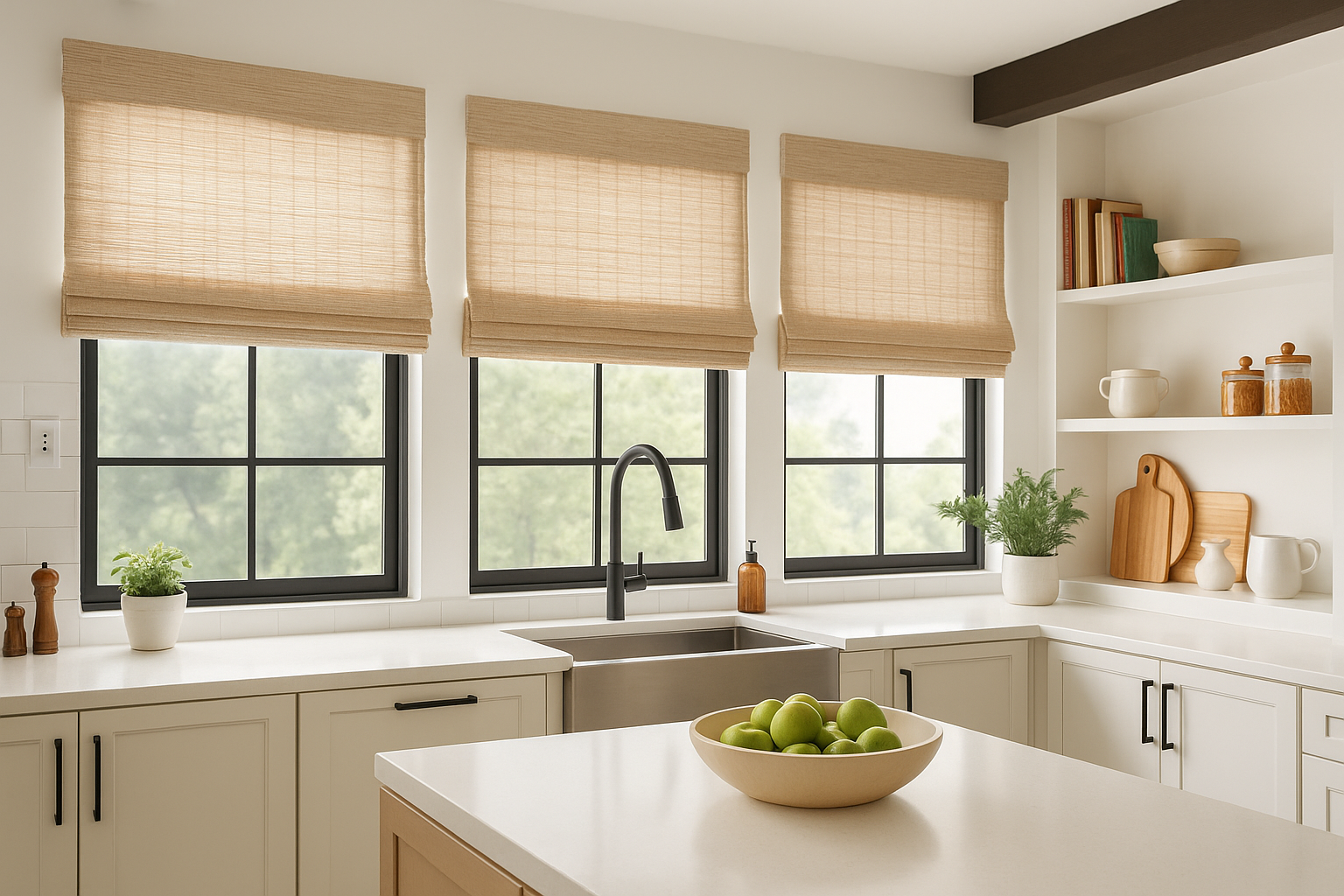
- Pros: Elegant, customizable fabrics
- Cons: Less effective blackout with inside mount
- Best for: Cozy zones like reading areas or bedrooms
Mechanical Blinds
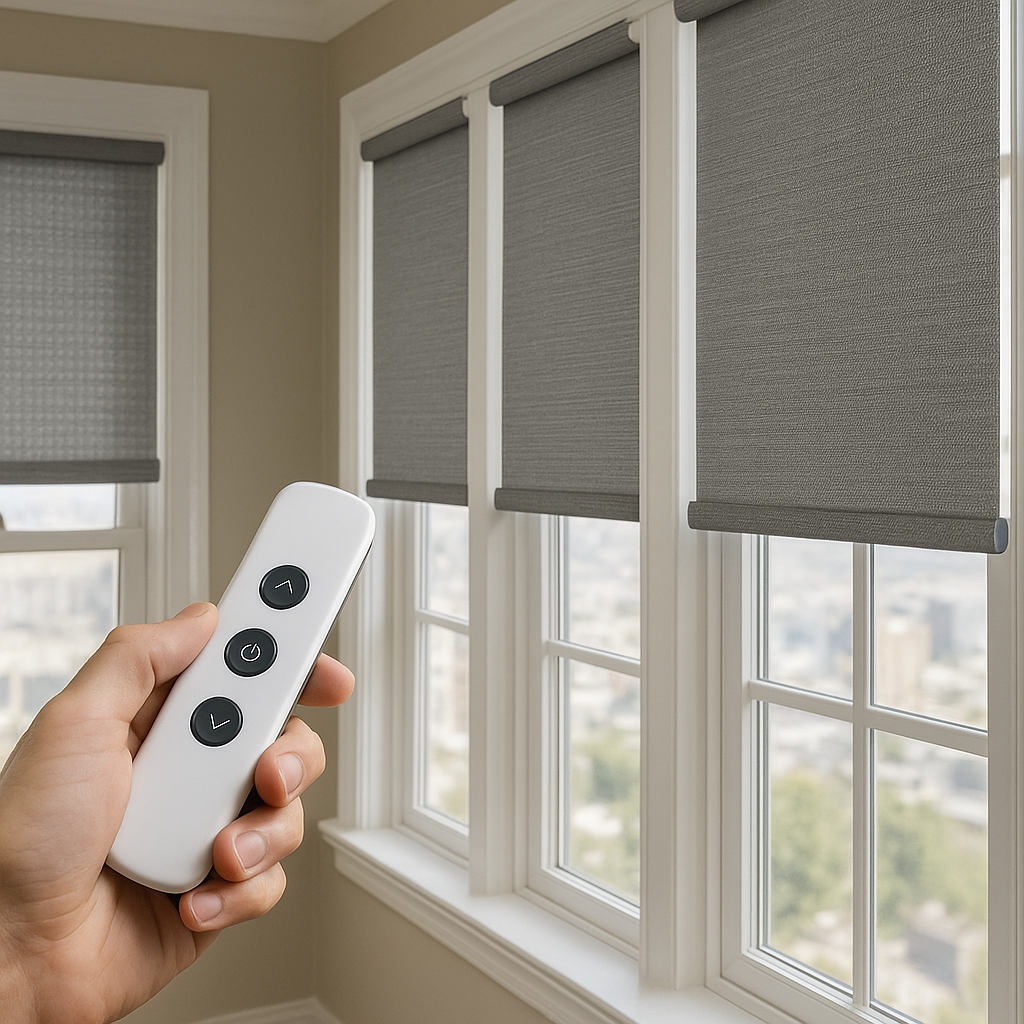
- Pros: Durable, easy to automate
- Cons: Can feel less decorative
- Best for: Kitchens or media rooms
Layered Curtains and Sheers
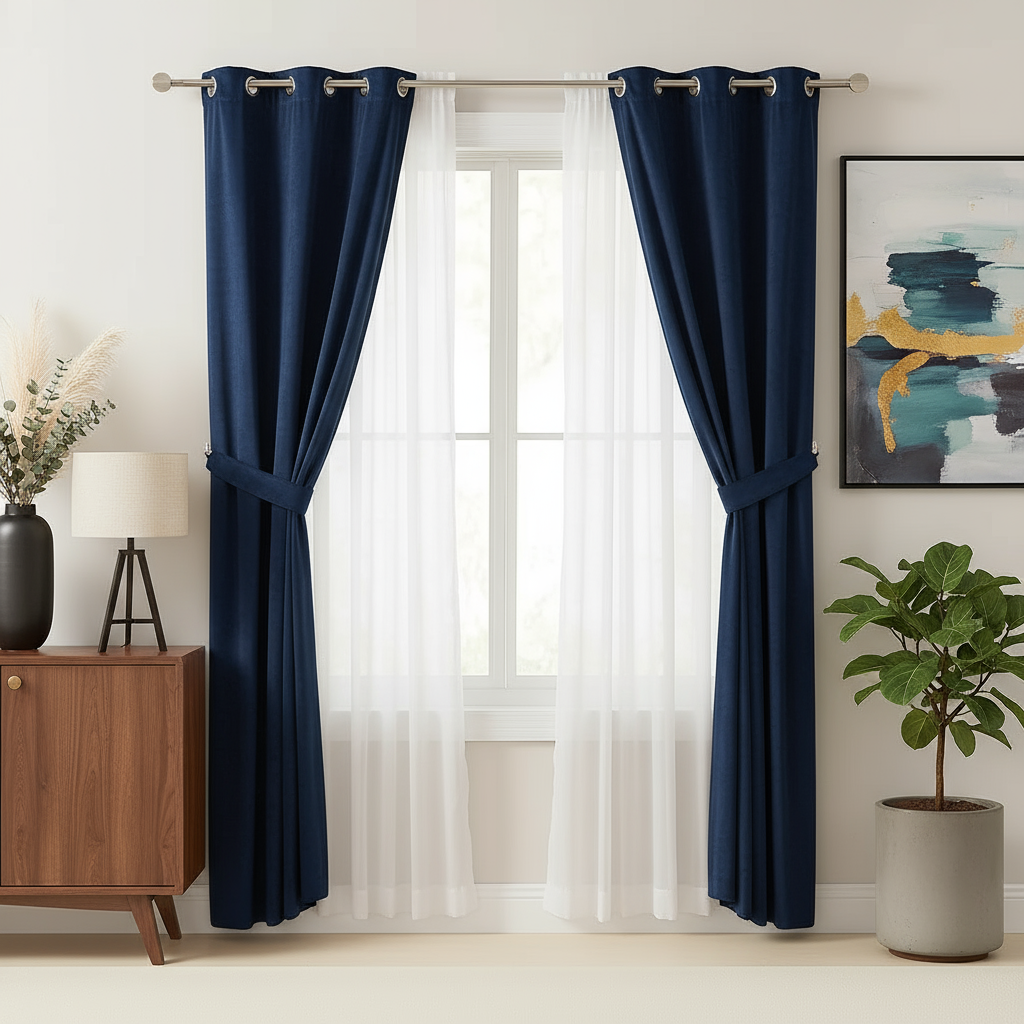
- Pros: Flexible light control, stylish
- Cons: More installation effort
- Best for: Bedrooms and lounge zones
Valances and Top Treatments
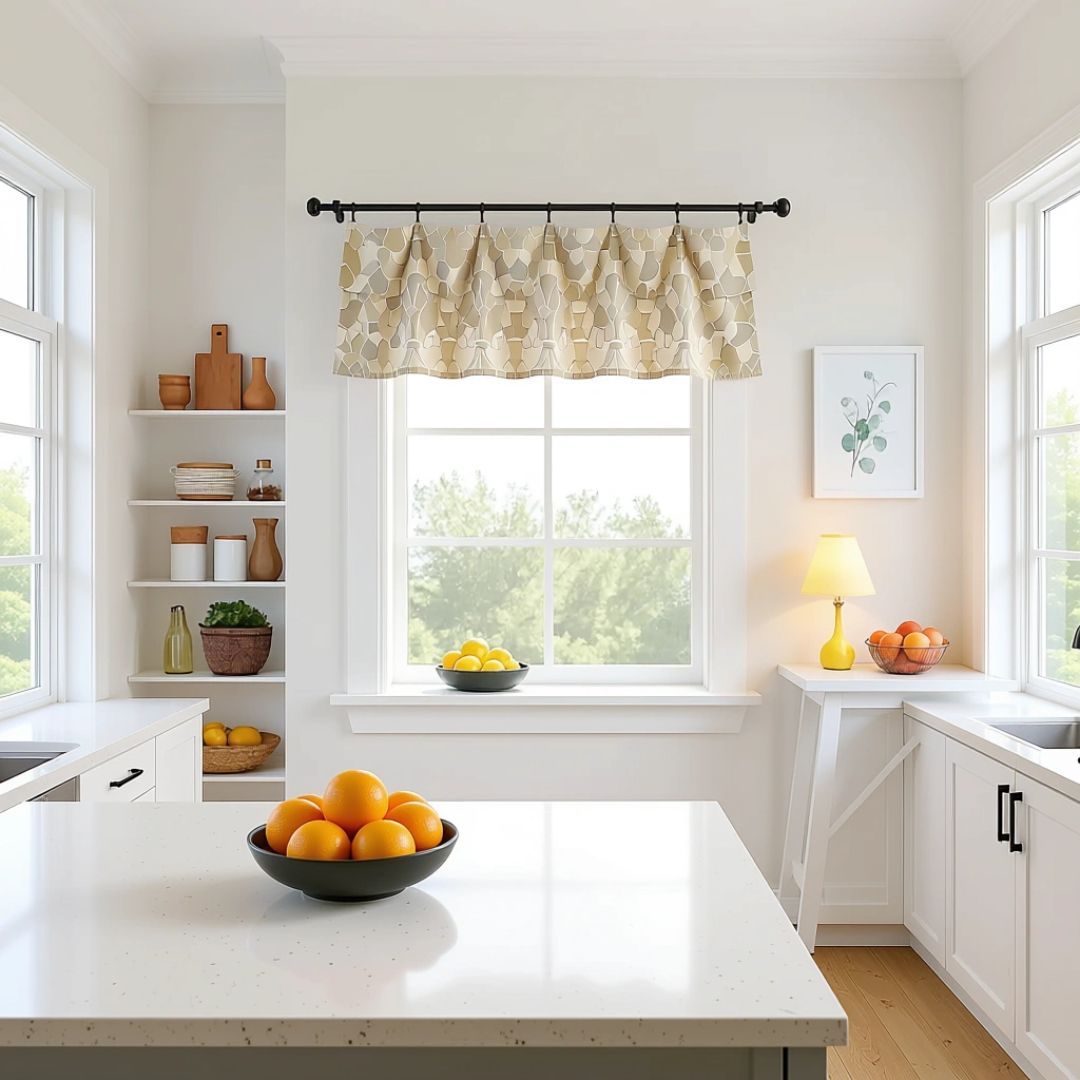
- Pros: Decorative frame for windows
- Cons: No privacy or light control alone
- Best for: Accent over other coverings
Creating Visual Zones with Window Treatments
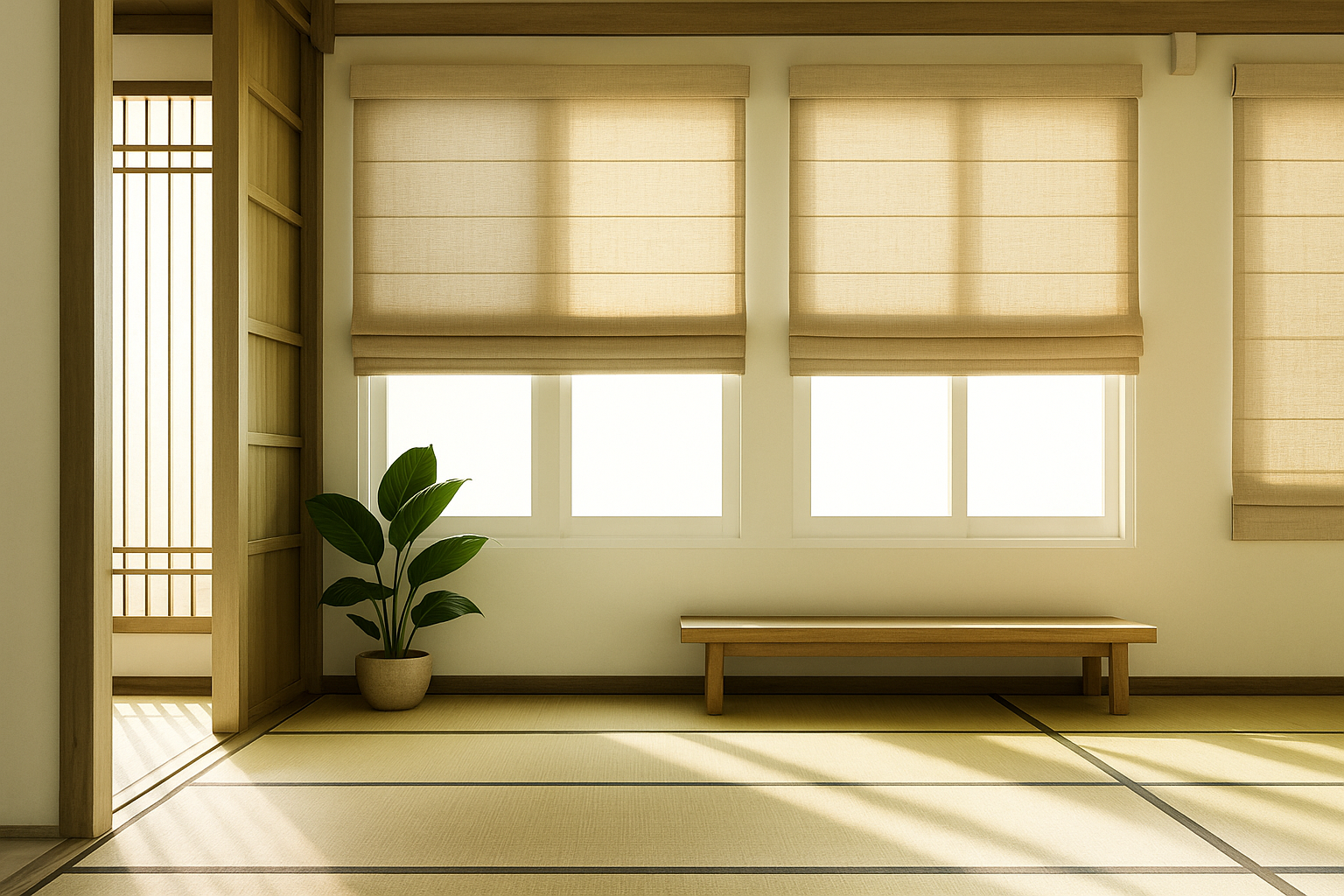
In open floor plans, treatments are tools for defining areas without blocking light or airflow.
Practical tips:
- Use different fabric weights to signal different spaces
- Change colors or patterns subtly between zones
- Install treatments at different heights to create transitions
- Combine sheer and blackout options to suit varied uses
Budget Tiers for Open-Concept Homes
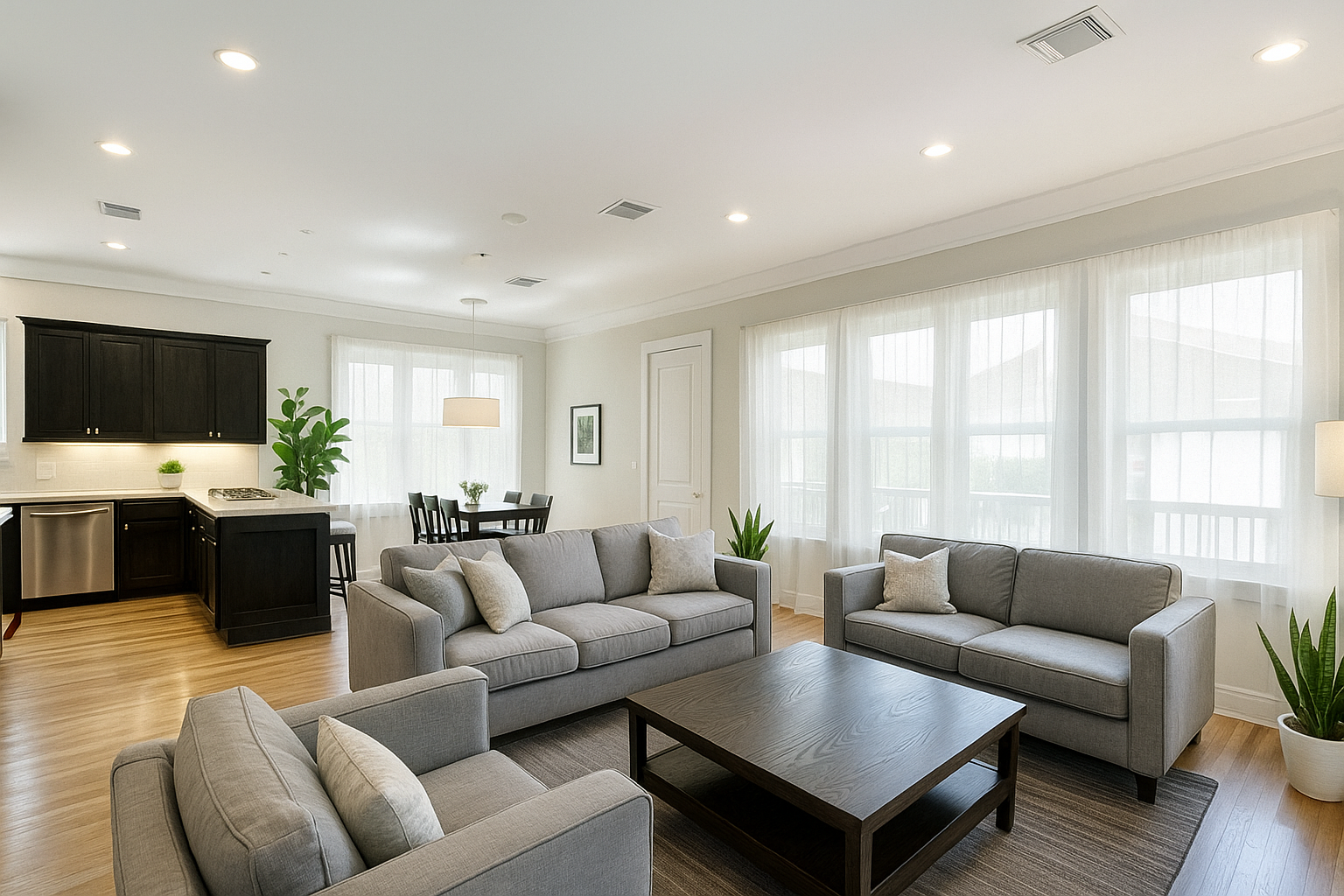
Budget-Friendly
- Standard vertical blinds
- Basic roller shades with light-filtering fabric
Mid-Range
- Cellular shades
- Layered curtains with off-the-shelf panels
Premium
- Custom Silhouette or Luminette sheers
- Motorized treatments integrated with smart home systems
Texas Climate Considerations for Window Treatments
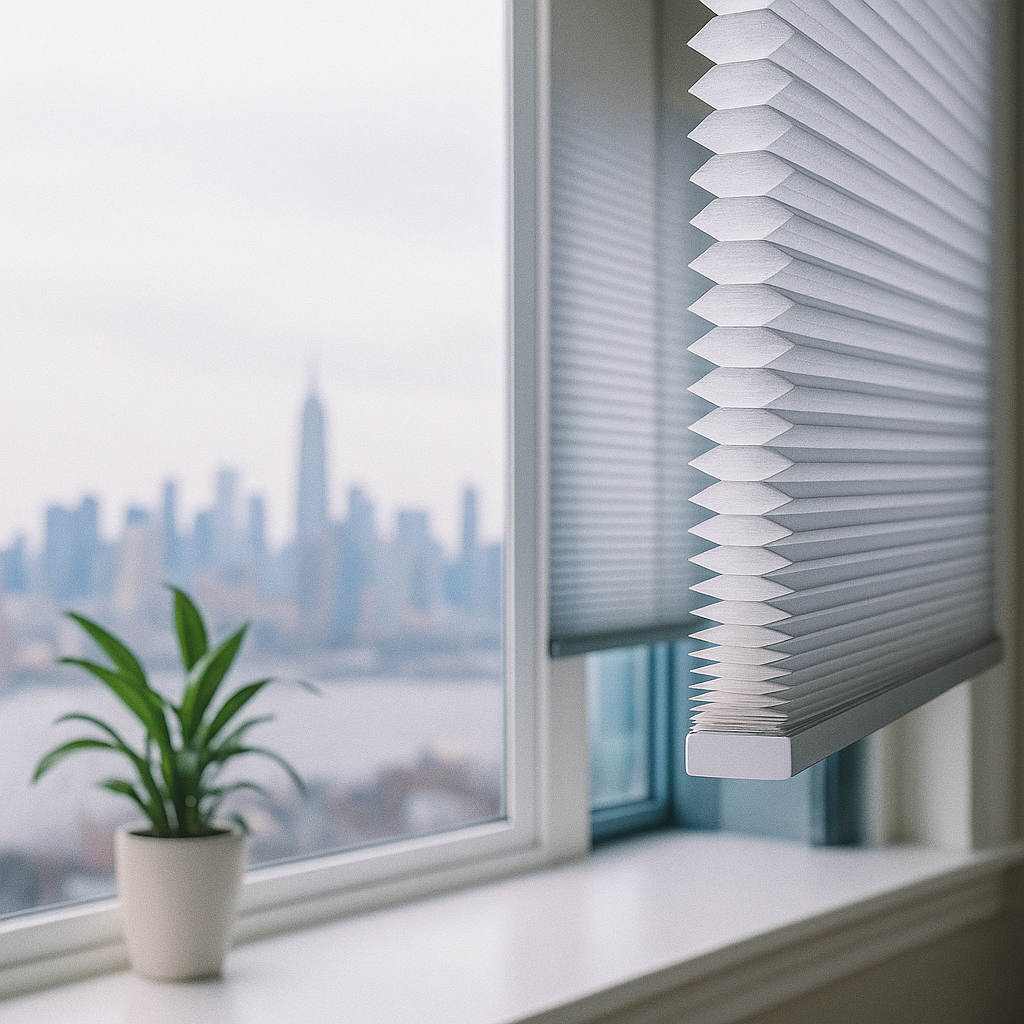
Homes in Texas face intense sunlight, heat, and occasional humidity. Treatments should handle these factors without sacrificing style.
Recommendations:
- Faux wood blinds resist warping in humidity
- Honeycomb cellular shades reduce heat gain
- UV-protective liners on drapes protect floors and furniture
- Seasonal layering with sheer panels in summer and thermal curtains in winter
For homeowners looking for the
best window coverings for Texas sun, energy efficiency, durability, and UV protection should be top priorities. The right treatments not only enhance comfort but also prevent long-term damage to furniture, flooring, and decor.
Motorization and Smart Control in Open Spaces
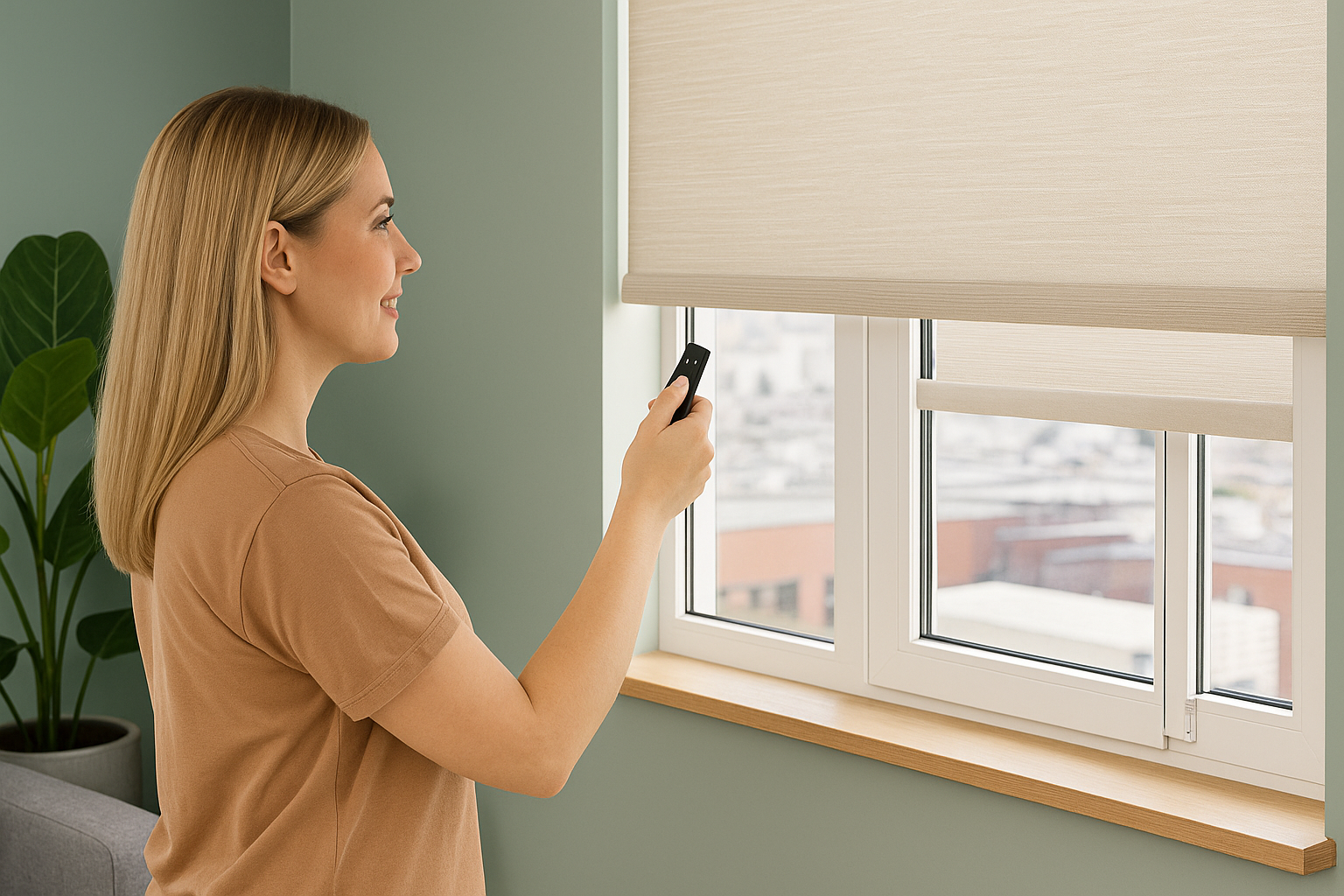
Motorized treatments are practical in open floor plans where multiple windows need adjustment.
Benefits:
- Operate all coverings at once
- Schedule adjustments for light and privacy
- Integrate with voice assistants or mobile apps
- Improve safety by removing cords

